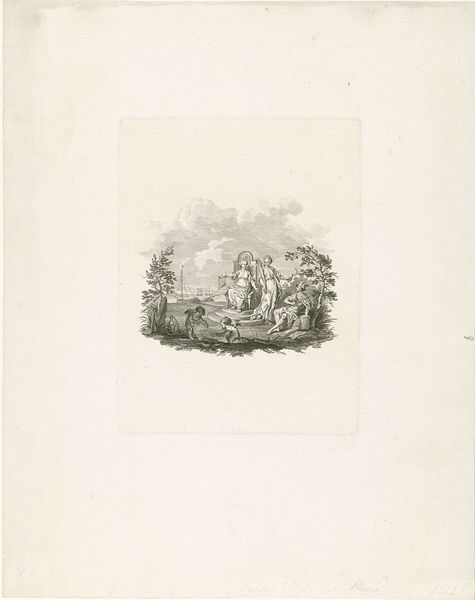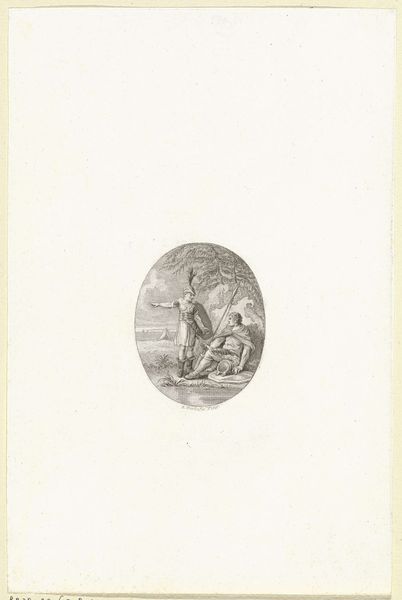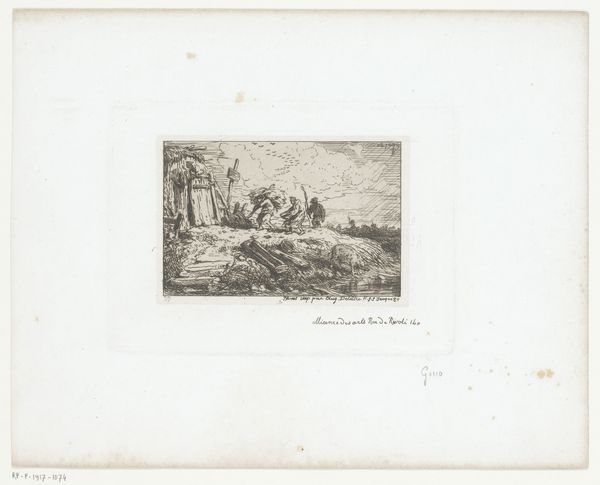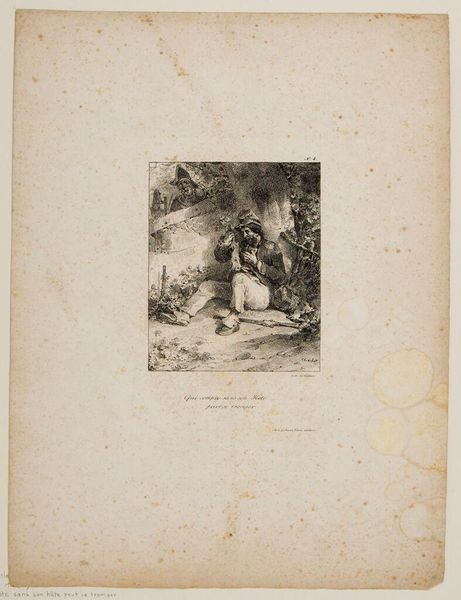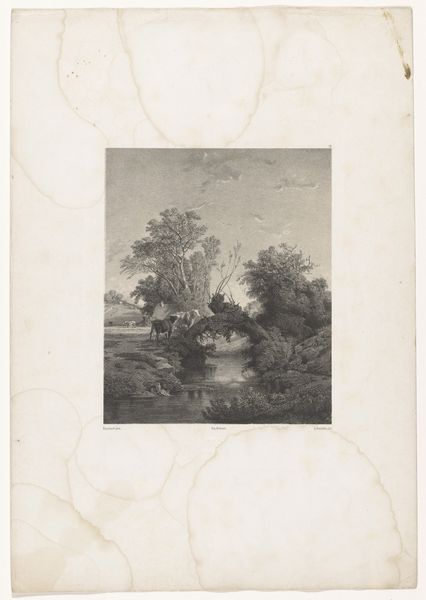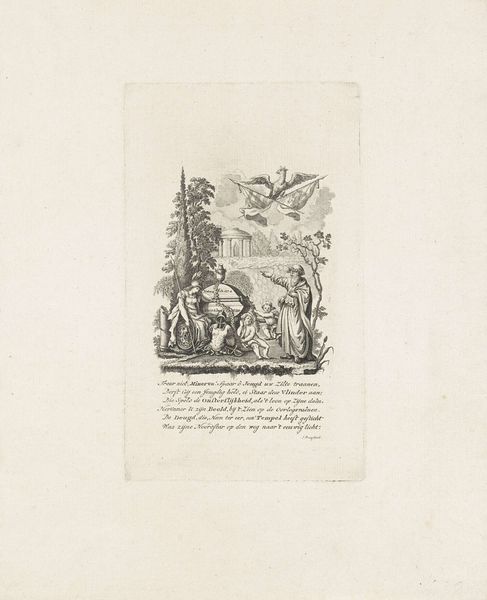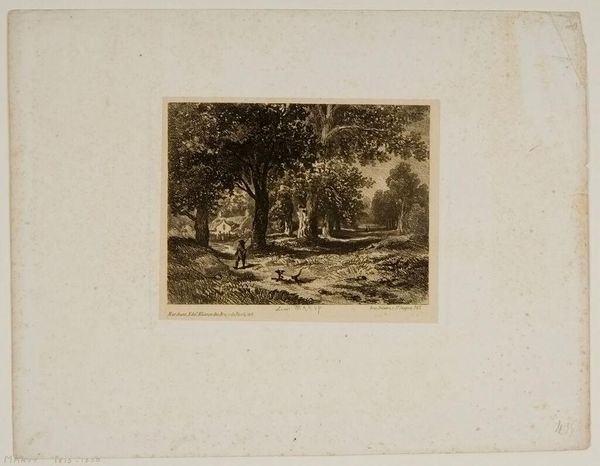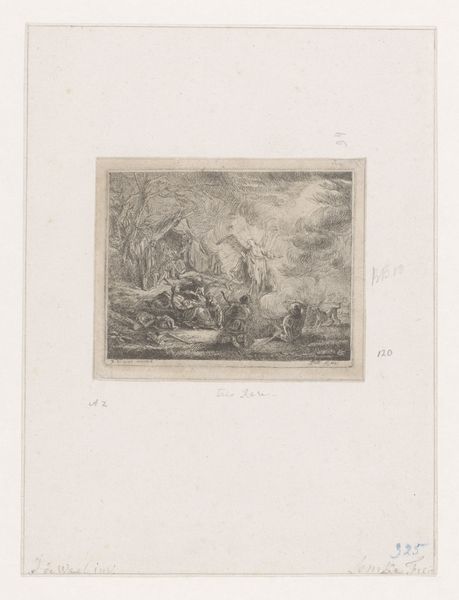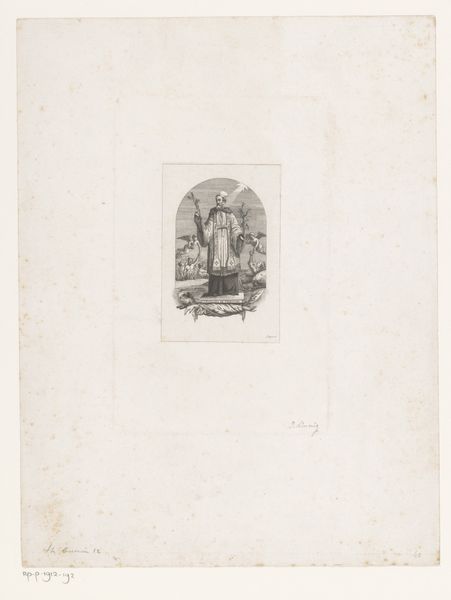
drawing, print, engraving
#
drawing
# print
#
landscape
#
history-painting
#
engraving
Dimensions: height 243 mm, width 160 mm
Copyright: Rijks Museum: Open Domain
Curator: Here we have Reinier Vinkeles's "Vignet met grafmonument in een landschap," a print made sometime between 1751 and 1816, currently held in the Rijksmuseum. The first impression that strikes you, Editor? Editor: The stillness. Despite the suggestion of landscape, complete with distant figures and animals, the engraving conveys a strong sense of quietude through its fine, dense line work and the careful arrangement of pastoral objects. Curator: Indeed. Vinkeles, employing precise engraving techniques, creates a detailed visual space within the oval, effectively compressing depth. The materiality of the monument form—its stony facade—lends gravitas, no? Editor: Certainly, yet the foreground objects offer another interpretation. The tools—the rake, the shovel, the scythe—suggest agricultural labor. What does it mean when we position instruments of daily work in conversation with symbols of remembrance and monuments of the elite? Curator: That friction generates powerful symbolic resonance. Consider the carefully arranged still life before the monument—it infuses elements of history painting into a commentary on the agrarian life of the era. It underscores the dignity of labor. Editor: Or the constant pressures that workers in that period had to endure in order to construct monuments or feed those that admired the grand monuments of society? Curator: Perhaps it presents that tension not as adversarial, but intertwined—integral to the landscape itself. The landscape’s success depends on that labor and the memorial reminds that all labor is finite. Editor: The formal arrangement makes me wonder whether Vinkeles considers monument-making another form of labor, using meticulous hand work that rivals other professions in detail and demand? Curator: That reading highlights Vinkeles's awareness of the interplay between material production and memorializing ideals, blurring distinctions. Editor: Ultimately, the artwork seems to want us to remember the daily efforts involved in our most sacred historical artifacts, whether grand buildings or humble tokens of memory. Curator: And maybe to think about the people—all the working people—behind their construction.
Comments
No comments
Be the first to comment and join the conversation on the ultimate creative platform.
